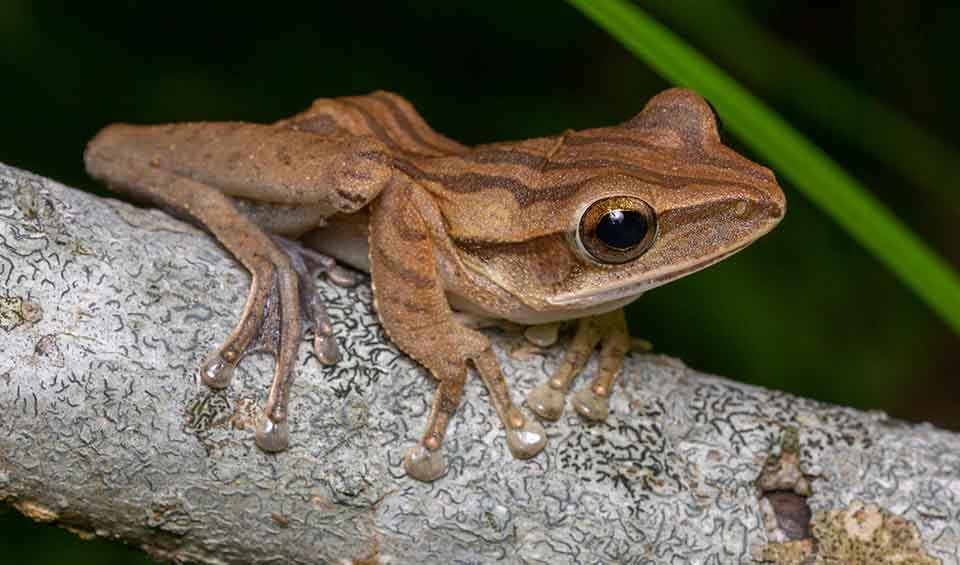Polypedates – Whipping frogs
Known for their big leaps, easily jumping several times the length of their body
Some of the most interesting and adaptable tree frogs found across Southeast Asia and parts of South Asia. They get their nickname from their quick, whip-like movements and impressive leaping abilities. With long legs, slender bodies, and sticky toe pads, these frogs are built for life in the trees. They’re great climbers and can often be seen clinging to leaves, twigs, or even windows during the rainy season. What makes them especially unique is their clever way of laying eggs—not in water like most frogs, but in foamy nests that hang over water, a behavior that gives them a surprising advantage in raising their young.
One of the coolest things about whipping frogs is how they protect their eggs. Instead of leaving them in ponds where they could be eaten or dry out, female Polypedates frogs beat their legs rapidly to whip up a thick, foamy nest. These nests are attached to leaves or branches hanging over water. The foam keeps the eggs moist and safe. When the tadpoles hatch, they drop from the nest into the water below, where they continue to grow. Some species have even been observed guarding their nests, which is pretty rare behavior in frogs. This strategy helps ensure the young have a better chance at survival.
Another fun fact is how far they can jump. Whipping frogs might be small—often just a few inches long—but they can leap several times their body length. Their long, muscular legs and lightweight bodies make them excellent escape artists when predators come close. Plus, their coloring helps them blend in with bark, leaves, and branches, making them hard to spot even in plain sight. They come in various shades of brown, green, and sometimes even with stripes or spots, depending on the species.
Species in this genus
Common tree frog
Believed to have naturally spread across much of Asia


